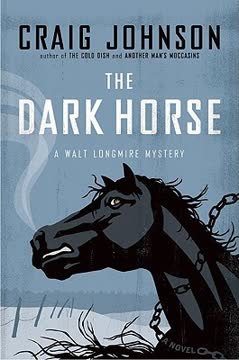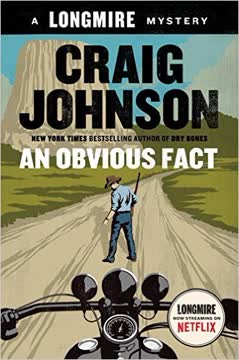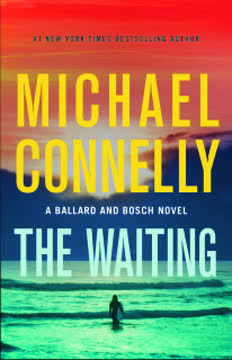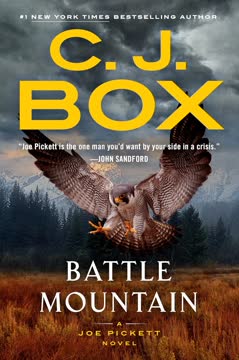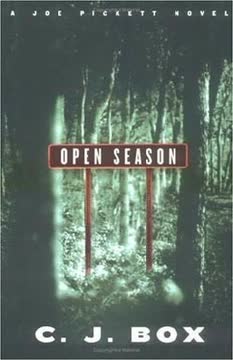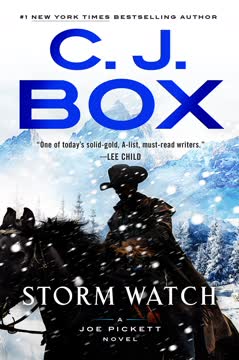Plot Summary
Walt's Undercover Mission Begins
Sheriff Walt Longmire arrives in the small, desolate town of Absalom, Wyoming, under the guise of an insurance investigator. His mission is to uncover the truth behind the murder of Wade Barsad, allegedly killed by his wife, Mary Barsad. Walt's instincts tell him that Mary's confession doesn't add up, and he is determined to find out what really happened. As he navigates the town's secrets, he encounters a mix of characters, each with their own motives and potential involvement in Wade's death.
A Town of Secrets and Lies
As Walt delves deeper into the investigation, he discovers that Absalom is a town filled with secrets and lies. The locals are wary of outsiders, and everyone seems to have something to hide. Walt meets Juana, a Guatemalan bartender, and her son, Benjamin, who provide him with valuable insights into the town's dynamics. He also encounters Bill Nolan, a rancher with a grudge against Wade, and Hershel Vanskike, a cowboy with a mysterious past. Each interaction reveals more about the town's dark underbelly and the complex web of relationships surrounding Wade's murder.
The Mysterious Mary Barsad
Mary Barsad, the accused murderer, is a woman of contradictions. Despite her confession, Walt senses that there is more to her story. She is haunted by dreams of horses and fire, and her mental state is fragile. Walt learns that Mary was once a successful horsewoman, and her love for her horses was well-known. The more he learns about her, the more he doubts her guilt. Walt's interactions with Mary reveal a woman trapped by circumstances beyond her control, and he becomes determined to uncover the truth behind her confession.
Uncovering the Truth
Walt's investigation leads him to uncover Wade Barsad's dubious business dealings and connections to organized crime. Wade was involved in various illegal activities, and his past is littered with enemies. Walt learns that Wade was in debt to many people, and his death may have been a convenient way to settle scores. As Walt pieces together the puzzle, he realizes that Wade's murder is not as straightforward as it seems. The list of potential suspects grows, and Walt must navigate the dangerous waters of deceit and betrayal to find the real killer.
A Dangerous Encounter
Walt's undercover mission takes a perilous turn when he is attacked at the local bar. A confrontation with a local thug named Cliff Cly escalates into a shootout, leaving Walt shaken but determined to continue his investigation. The incident highlights the risks of his mission and the volatile nature of the town. Despite the danger, Walt remains resolute in his quest for justice, knowing that the truth is within reach if he can survive long enough to uncover it.
The Past and Present Collide
During his investigation, Walt is taken to his childhood home, a place filled with memories and emotions. The visit forces him to confront his past and the choices that have led him to this point. As he stands on the land where he grew up, Walt reflects on the passage of time and the changes in his life. The experience strengthens his resolve to seek justice for Mary Barsad and to uncover the truth about Wade's murder, even as the past and present collide in unexpected ways.
A Father's Dilemma
Amidst the chaos of the investigation, Walt receives a call from his daughter, Cady, who shares news of a marriage proposal. The conversation forces Walt to confront his feelings about his daughter's future and his own role as a father. As he balances the demands of his personal life with the complexities of the case, Walt is reminded of the importance of family and the difficult choices that come with it. The call serves as a poignant reminder of the stakes involved, both in his personal life and in his pursuit of justice.
Walt's Emotional Turmoil Unveiled
Sheriff Walt Longmire is haunted by the recent events involving his daughter, Cady, and the ongoing investigation into Mary Barsad's case. Despite his outward composure, Walt is deeply troubled by the emotional aftermath of Cady's narrow escape and the burden of having Mary in his custody. His sleepless nights and introspective moments reveal a man struggling to balance his protective instincts with the harsh realities of his profession. As he navigates the complexities of the case, Walt's internal conflict becomes a driving force in his quest for justice.
A Tense Confrontation with Cliff
During a tense encounter at the local bar, Walt's undercover mission takes a dangerous turn when he confronts Cliff Cly, a local thug with a volatile nature. The situation escalates into a shootout, highlighting the risks of Walt's investigation and the precarious nature of his position in Absalom. Despite the danger, Walt remains resolute, determined to uncover the truth behind Wade Barsad's murder and protect those he cares about. This confrontation serves as a catalyst for Walt's deeper involvement in the town's dark secrets.
Unraveling the Mystery of Mary
As Walt continues his investigation, he becomes increasingly convinced of Mary Barsad's innocence. Through their interactions, he uncovers the layers of her complex character, including her love for horses and the traumatic events that have shaped her life. Walt's empathy and determination to seek justice for Mary drive him to question the validity of her confession and the circumstances surrounding Wade's death. This chapter highlights Walt's growing connection to Mary and his commitment to uncovering the truth.
A Deadly Game of Cat and Mouse
The investigation takes a dramatic turn as Walt discovers that Wade Barsad is not who he seems. With the help of Cliff Cly, who is revealed to be an undercover FBI agent, Walt uncovers a web of deceit involving Wade's faked death and his brother's murder. As the pieces of the puzzle fall into place, Walt must navigate a dangerous game of cat and mouse to bring Wade to justice. This chapter underscores the high stakes of the investigation and the lengths Walt will go to protect the innocent.
The Final Showdown on the Bridge
The investigation reaches its climax as Walt faces off against Wade Barsad on a precarious bridge. With the stakes higher than ever, Walt must rely on his instincts and the trust he has built with Wahoo Sue to outmaneuver Wade and bring him to justice. This chapter highlights Walt's courage and resourcefulness, as well as the culmination of his emotional and professional journey in Absalom.
A New Beginning for Absalom
In the aftermath of the investigation, Walt contemplates the changes in Absalom and the impact of his actions on the community. As he watches Mary Barsad and her horse, Wahoo Sue, begin a new chapter, Walt finds solace in the knowledge that justice has been served. This chapter serves as a poignant reminder of the power of redemption and the enduring strength of the human spirit.
Characters
Walt Longmire
Walt Longmire is a seasoned sheriff whose deep sense of justice drives him to uncover the truth behind Wade Barsad's murder. Throughout the investigation, Walt grapples with personal challenges, including his daughter's safety and his own emotional turmoil. His interactions with Mary Barsad reveal his compassionate nature, while his determination to protect the innocent underscores his unwavering commitment to his role as a lawman.
Mary Barsad
Mary Barsad is a woman haunted by her past and accused of murdering her husband, Wade. Despite her confession, Walt senses her innocence and becomes determined to uncover the truth. Mary's love for horses and her fragile mental state add depth to her character, highlighting the complexities of her situation and the circumstances that have led to her current predicament.
Wade Barsad
Wade Barsad is the central figure in the investigation, a man with a faked death and a trail of deceit. His involvement in organized crime and the murder of his brother reveal a manipulative and dangerous individual. Wade's actions have far-reaching consequences, and his confrontation with Walt serves as the dramatic climax of the story.
Cliff Cly
Cliff Cly is initially introduced as a local thug, but is later revealed to be an undercover FBI agent. His complex relationship with Walt and his involvement in the investigation add layers to his character. Despite his rough exterior, Cliff's actions ultimately aid Walt in bringing Wade Barsad to justice, highlighting his commitment to the greater good.
Wahoo Sue
Wahoo Sue is a black mare with a troubled past, whose bond with Walt becomes a symbol of redemption and resilience. Her role in the investigation and her daring escape with Walt underscore the power of trust and the enduring connection between man and horse. Wahoo Sue's journey mirrors Walt's own, as both find strength and purpose in their shared experiences.
Henry Standing Bear
Henry Standing Bear is Walt's loyal friend and confidant, providing support and guidance throughout the investigation. His wisdom and insight are invaluable to Walt, and his presence adds depth to the story. Henry's character serves as a grounding force for Walt, reminding him of the importance of friendship and loyalty.
Juana
Juana is a Guatemalan bartender who becomes an important ally in Walt's investigation. Her intelligence and resourcefulness provide valuable insights into the town's dynamics, and her determination to protect her son, Benjamin, adds a personal dimension to the story. Juana's character highlights the challenges faced by those living on the margins of society.
Benjamin
Benjamin is Juana's son, a young boy with a keen sense of observation and a deep connection to his mother. His involvement in the investigation and his interactions with Walt reveal a courageous and insightful character. Benjamin's journey serves as a reminder of the innocence and resilience of youth in the face of adversity.
Plot Devices
Undercover Investigation
The undercover investigation is a central plot device, driving the narrative and creating tension as Walt navigates the town's secrets. His disguise as an insurance investigator allows him to gather information and interact with the locals without revealing his true identity. This plot device adds complexity to the story, as Walt must balance his role as a sheriff with the demands of his covert mission.
Confession and Doubt
Mary Barsad's confession is a pivotal plot device, creating doubt and uncertainty about her guilt. Despite her admission, Walt's instincts tell him that there is more to the story. This device drives the investigation, as Walt seeks to uncover the truth behind Mary's confession and the events leading to Wade's murder.
Small-Town Dynamics
The small-town dynamics of Absalom serve as a backdrop for the investigation, highlighting the secrets and lies that permeate the community. The town's insular nature and distrust of outsiders create obstacles for Walt, adding tension and conflict to the narrative. This plot device emphasizes the challenges of uncovering the truth in a town where everyone has something to hide.
Redemption and Resilience
The theme of redemption and resilience is embodied in the character of Wahoo Sue, whose journey mirrors Walt's own. Her transformation from a troubled past to a symbol of strength and loyalty underscores the power of trust and the enduring connection between man and horse. This plot device highlights the overarching narrative of redemption and the enduring strength of the human spirit.
Analysis
"The Dark Horse" by Craig Johnson is a compelling exploration of justice, redemption, and the complexities of human nature. Through the character of Walt Longmire, the novel delves into the moral ambiguities of law enforcement and the personal challenges faced by those who seek justice. The story's setting in the small town of Absalom serves as a microcosm of larger societal issues, highlighting the pervasive nature of secrets and lies. The novel's emphasis on redemption and resilience, embodied in the characters of Mary Barsad and Wahoo Sue, underscores the enduring strength of the human spirit and the power of second chances. Ultimately, "The Dark Horse" is a testament to the importance of empathy, understanding, and the relentless pursuit of truth.
Last updated:
FAQ
Synopsis & Basic Details
What is The Dark Horse about?
- Undercover Quest for Truth: Sheriff Walt Longmire goes undercover as an insurance investigator in the desolate Wyoming town of Absalom, driven by an instinct that Mary Barsad, accused of murdering her husband Wade, is innocent despite her confession.
- Unraveling Deception: Walt navigates a community steeped in secrets, encountering characters like the enigmatic bartender Juana, the loyal cowboy Hershel, and the embittered rancher Bill Nolan, all while uncovering Wade Barsad's shadowy past involving organized crime and a faked death.
- Personal & Professional Stakes: As Walt delves deeper into the complex web of murder, arson, and identity fraud, he faces personal challenges, including his daughter Cady's life choices and his own emotional turmoil, all leading to a dangerous confrontation with the true antagonist.
Why should I read The Dark Horse?
- Deep Psychological Insight: The novel offers a profound exploration of trauma, grief, and resilience, particularly through Mary Barsad's dissociative state and Walt's own struggles with loss, making for a rich character study.
- Masterful Blend of Genres: Craig Johnson seamlessly weaves classic Western noir with elements of mystery, humor, and poignant emotional depth, set against the rugged, symbolic landscape of Wyoming, offering a unique reading experience.
- Subtle Thematic Layers: Beyond the thrilling plot, the book delves into themes of justice, identity, the nature of truth, and the enduring human-animal bond, rewarding readers who appreciate nuanced storytelling and rich symbolism.
What is the background of The Dark Horse?
- Wyoming's Desolate Beauty: The story is set in the fictional, isolated town of Absalom, Wyoming, a place described as "halfway between woebegone and far away," reflecting the harsh, unforgiving, yet beautiful high-plains environment that shapes its inhabitants.
- Biblical Allusion & Local Lore: The town's name, Absalom, is a direct biblical reference to King David's rebellious son, subtly foreshadowing themes of betrayal and conflict, while local legends and historical events, like the buffalo soldier incident, ground the narrative in a rich, often violent, Western past.
- Economic & Social Undercurrents: The narrative touches upon the impact of energy development (methane gas) on rural communities, the struggles of family ranches, and the insular nature of small-town life, where distrust of outsiders and a strong sense of self-reliance are prevalent.
What are the most memorable quotes in The Dark Horse?
- "dark horse: noun 1 a: a usually little known contender (as a racehorse) that makes an unexpectedly good showing b: an entrant in a contest that is judged unlikely to succeed 2: a person who reveals little about himself or herself, esp. someone who has unexpected talents or skills": This opening definition is a powerful piece of The Dark Horse symbolism, directly foreshadowing the unexpected turns of the plot and the hidden depths of characters like Walt, Mary, and Wahoo Sue.
- "I think our hearts are the most fearless organ we've got, considering how often they'll make the same mistake, over and over again.": Walt's poignant reflection on the human heart, shared with Mary Barsad, encapsulates a central theme in The Dark Horse about vulnerability, resilience, and the repeated pursuit of connection despite past pain, offering deep Walt Longmire analysis.
- "You know, one of the worst images perpetrated on society is the idea of a cowboy with a gun — you give a real cowboy a choice between a gun and a rope and he'll take the rope every time, because that's how he makes his living. No self-respecting cowboy makes a living with a gun.": This quote, delivered by Walt during the climax, defines his core philosophy and the true spirit of the West, contrasting genuine skill and purpose with destructive force, providing key Walt Longmire motivations explained.
What writing style, narrative choices, and literary techniques does Craig Johnson use?
- First-Person, Introspective Voice: The novel is narrated by Walt Longmire, offering readers direct access to his dry wit, philosophical musings, and deep emotional landscape, creating an intimate and engaging reading experience that defines Craig Johnson's writing style.
- Rich Sensory Detail & Pacing: Johnson employs vivid descriptions of the Wyoming landscape, weather, and the physical sensations of action, immersing the reader in the setting. The narrative balances moments of quiet introspection with sudden bursts of intense action, building suspense effectively.
- Subtle Foreshadowing & Allusion: The author masterfully plants subtle clues and references throughout the story, from biblical allusions (Absalom) to seemingly minor character interactions, which gain significant meaning later, rewarding attentive readers and enriching the The Dark Horse analysis.
Hidden Details & Subtle Connections
What are some minor details that add significant meaning?
- The Meadowlark's Song: The seemingly innocuous detail of hearing a "western meadowlark" on the phone call with Wade's supposed brother in Ohio is the crucial clue that reveals Wade Barsad is alive and impersonating his brother, a brilliant piece of The Dark Horse explained through subtle sensory detail.
- Hershel's "Fortunes": Hershel Vanskike's obsession with the Kmart astrology scrolls, which he calls his "fortunes," initially seems like a quirky character trait but subtly foreshadows the hidden "kite" (list of names) found within the Henry rifle, linking his personal beliefs to the central mystery and providing The Dark Horse symbolism.
- The .22 Varmint Rifle: The fact that Wade Barsad was allegedly killed with his own .22 varmint rifle, rather than one of his many locked-up weapons, is a subtle but critical detail that hints at the staged nature of the crime and Mary's manipulated involvement, deepening the Mary Barsad analysis.
What are some subtle foreshadowing and callbacks?
- Mike Niall's Warnings: The old rancher Mike Niall's repeated warnings to Walt, "I wouldn't go down there if I was you; it's not a friendly place," and his later comment about Absalom being "cursed," subtly foreshadow the pervasive danger and deep-seated corruption Walt encounters in the town, setting the tone for The Dark Horse themes.
- The "Dark Horse" Definition: The dictionary definition of "dark horse" at the book's opening directly foreshadows the unexpected emergence of key characters (Mary Barsad, Wahoo Sue) and the surprising twists in the plot, particularly Wade Barsad's faked death, providing a meta-narrative layer to The Dark Horse symbolism.
- Walt's Broken Foot: The injury Walt sustains at the end, a "proximal avulsion fracture of my fifth metatarsal," is a callback to the horse landing on his foot, a physical manifestation of the risks he takes and the literal "grounding" he experiences, contrasting with his earlier emotional detachment and adding to Walt Longmire analysis.
What are some unexpected character connections?
- Cliff Cly as FBI Agent: Cliff Cly, initially presented as a volatile local thug and rival, is unexpectedly revealed to be an undercover FBI agent, transforming his earlier aggressive interactions with Walt into a complex, almost collaborative, dynamic, a major twist in The Dark Horse plot explained.
- Bill Nolan's Family History with Walt: Bill Nolan, a key suspect, is revealed to have known Walt since childhood, having grown up near his family's ranch. This personal connection adds a layer of complexity to Bill's character and his involvement, highlighting the deep roots of community in The Dark Horse.
- Mary Barsad's "Voice" as Wade's: The chilling revelation that the "voice" Mary heard, instructing her to shoot Wade, was actually Wade's own voice, reveals a profound psychological manipulation and the depth of his depravity, offering a shocking insight into Mary Barsad's motivations.
Who are the most significant supporting characters?
- Hershel Vanskike: More than just a quirky cowboy, Hershel embodies the fading spirit of the old West and serves as a moral compass, his deep connection to animals and his quiet loyalty to Mary and Benjamin providing a stark contrast to Wade's cruelty, crucial for The Dark Horse character analysis.
- Juana Balcarcel: Juana, the Guatemalan bartender, is a resourceful and intelligent ally who, despite her undocumented status, provides Walt with critical information and a grounded perspective on Absalom's hidden dynamics, representing resilience and the challenges of marginalized communities in The Dark Horse.
- Benjamin Balcarcel: Juana's young son, Benjamin, is not merely a child in peril but a keen observer whose innocent insights and eventual deputization symbolize the passing of the torch and the enduring hope for justice in a harsh world, adding a poignant layer to The Dark Horse themes.
Psychological, Emotional, & Relational Analysis
What are some unspoken motivations of the characters?
- Wade Barsad's Need for Control: Beyond financial gain, Wade's elaborate scheme to fake his death and frame Mary, including psychologically manipulating her with drugs and his voice, reveals a deep-seated need for absolute control and a sadistic pleasure in tormenting others, central to Wade Barsad's motivations.
- Mary Barsad's Self-Punishment: Mary's initial confession and her subsequent refusal to eat or speak are not just signs of trauma but also a form of self-punishment, driven by guilt over her perceived role in the horses' deaths and her inability to escape Wade's psychological grip, offering a deeper Mary Barsad analysis.
- Walt's Grief Aversion: Walt's intense focus on Mary's case and his willingness to go to extreme lengths (undercover, fighting) are subtly motivated by his own unresolved grief and anxiety over Cady's past trauma and departure, using the case as a way to exert control and protect, a key aspect of Walt Longmire's emotional journey.
What psychological complexities do the characters exhibit?
- Mary's Dissociative State: Mary's sleepwalking, her inability to recall events clearly, and her hearing Wade's voice are manifestations of a dissociative state induced by trauma and the sedative-hypnotic drugs, highlighting the psychological impact of abuse and the fragility of memory in The Dark Horse explained.
- Walt's Moral Ambiguity: Walt grapples with the ethical lines of his undercover work and the violence he employs, revealing his internal conflict between the lawman's duty and his personal code. His willingness to bend rules for justice showcases a complex moral landscape, a core element of Walt Longmire's character development.
- Cliff Cly's Conflicted Loyalty: Cliff Cly's dual role as a "thug" and an FBI agent creates psychological tension, as he navigates his undercover persona while maintaining a semblance of his true mission. His actions, though sometimes brutal, are ultimately driven by a professional duty that clashes with personal ethics, adding depth to Cliff Cly's motivations.
What are the major emotional turning points?
- Mary's First Real Conversation: When Mary finally speaks to Walt, admitting "I shoot people in the head" with chilling calm, it marks a critical emotional shift, signaling her emergence from catatonia and the beginning of her trust in Walt, a pivotal moment in Mary Barsad's journey.
- Walt's Fight in the Bar: Walt's spontaneous, violent outburst against Cliff Cly, triggered by Cly's crude remarks about Cady, is a raw emotional turning point, revealing the depth of Walt's protective instincts and his simmering rage, a key scene for Walt Longmire analysis.
- Wahoo Sue's Redemption: The moment Wahoo Sue, the traumatized "dark horse," finally accepts Walt's touch and allows him to ride her to safety, is a powerful emotional climax, symbolizing healing, trust, and the triumph of connection over abuse, a central piece of Wahoo Sue symbolism.
How do relationship dynamics evolve?
- Walt and Mary: From Jailer to Protector: Their relationship transforms from a formal prisoner-sheriff dynamic to one of deep empathy and trust, as Walt becomes Mary's unwavering advocate, convinced of her innocence and committed to her salvation, a core emotional arc in The Dark Horse.
- Walt and Henry: Unspoken Understanding: The bond between Walt and Henry Standing Bear deepens through shared experiences and unspoken communication, particularly during the fight and Benjamin's rescue, reinforcing Henry's role as Walt's steadfast moral and practical anchor, highlighting friendship themes in The Dark Horse.
- Walt and Absalom Locals: Distrust to Reluctant Acceptance: Initially met with suspicion and hostility ("You lost?"), Walt gradually earns a grudging respect from some locals like Mike Niall and Juana, demonstrating the slow, hard-won process of building trust in an insular community, a key aspect of small-town dynamics.
Interpretation & Debate
Which parts of the story remain ambiguous or open-ended?
- The Fate of Wade's "Kite": While the list of names and account numbers is recovered from the Henry rifle, its ultimate impact on the mob and the FBI's ongoing investigations remains open-ended, leaving the reader to ponder the long-term consequences of Wade's criminal past.
- Walt's Political Future: Despite his re-election, Walt's internal debate about his desire to remain sheriff and his contemplation of a federal marshal position (mentioned by Joe Meyer) leaves his long-term career path ambiguous, suggesting his journey of self-discovery is ongoing.
- Absalom's Future: While Mary Barsad plans to rebuild her ranch and Juana aims for citizenship, the overall future of Absalom as a town, particularly after the dramatic events and the destruction of its old bridge, remains uncertain, symbolizing the constant flux of the Western landscape.
What are some debatable, controversial scenes or moments in The Dark Horse?
- Walt's Use of Violence: Walt's brutal, almost primal, response to Cliff Cly's taunts during the bar fight, where he admits to hitting Cly "with the intention of the last" (to lay him out), sparks debate about the line between justice and personal vengeance, and the ethics of a lawman's actions, central to Walt Longmire's character.
- The Ethics of Walt's Undercover Work: Walt's decision to go undercover, using a false identity and engaging in deceptive practices, raises questions about the ethical boundaries of law enforcement, especially when it involves manipulating locals and operating outside his jurisdiction, a point of contention in The Dark Horse analysis.
- Mary Barsad's Culpability: Despite the revelation of Wade's manipulation, Mary's initial confession and her dissociative state leave a lingering ambiguity about her true level of responsibility or agency in the murder, prompting readers to debate the nature of guilt and innocence under extreme duress, a key aspect of Mary Barsad explained.
The Dark Horse Ending Explained: How It Ends & What It Means
- Wade Barsad's Demise & Justice Served: The climax sees Walt, riding the resilient Wahoo Sue, outmaneuver Wade Barsad on the old, condemned bridge. Wade's truck becomes high-centered as the bridge collapses, trapping him. Walt forces him to surrender his weapon, and Wade is ultimately arrested, facing two life sentences for his brother's murder and Hershel's death. This signifies the triumph of justice, albeit through unconventional means, and the end of Wade's reign of terror, providing a clear The Dark Horse ending explained.
- Symbolism of the Hat & New Beginnings: In the epilogue, Walt throws his old, sweat-stained hat into the Powder River, a powerful act of The Dark Horse symbolism. This gesture represents his shedding of the "Eric Boss" undercover persona, his acceptance of his re-election as sheriff, and a symbolic release of the burdens and grief he carried throughout the investigation. It signifies a new beginning for Walt, Mary (who plans to rebuild her ranch), Juana (pursuing citizenship), and Benjamin (deputized), suggesting healing and hope for the future of Absalom.
- The Enduring Spirit of the West: The final scene, with Mike Niall driving his old truck across the new bridge, and Walt's reflection on being "the cautious type" while Niall "likes to take chances," encapsulates the enduring spirit of the West. It highlights the blend of tradition and progress, the resilience of its people, and the constant interplay between risk and caution, reinforcing the core themes in The Dark Horse about adaptation and survival.
Review Summary
The Dark Horse receives mostly positive reviews, with readers praising the well-developed characters, engaging plot, and vivid Wyoming setting. Many appreciate Walt Longmire's character and his relationships with other recurring characters. Some note that the narrative structure, alternating between two timelines, can be confusing. The audiobook narration by George Guidall is highly praised. While a few readers found the pacing slow at times, most consider it a strong entry in the Longmire series, with its blend of Western and mystery elements.
Walt Longmire Series
Similar Books
Download PDF
Download EPUB
.epub digital book format is ideal for reading ebooks on phones, tablets, and e-readers.
